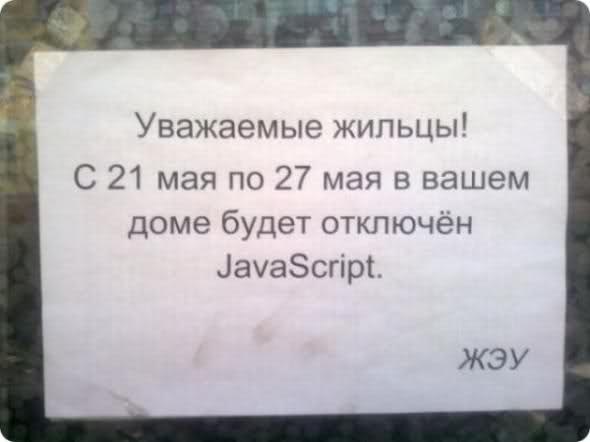Disable the jQuery library built into the MediaWiki 1.16.x engine, and replace it with a fresh one, updated and updated by the wiki administrators

As it is not difficult to read on MediaWiki , the current line of stable versions (1.16.x) comes with the built-in jQuery library, the code of which lies at
I suggest that you get to the point of view of the
')
The first impetus of such a striving is the natural and almost inevitable realization of how inconvenient is the appearance of jQuery in the page code, which is configured by default. Any
function editZeroSection(){ var body = document.getElementById('bodyContent') if (!body) return var h2s = body.getElementsByTagName('H2') var h2 = h2s[0] if (!h2) return if (h2.parentNode.id == 'toctitle') h2 = h2s[1] if (!h2) return var span = h2.firstChild if (!span || span.className != 'editsection') return var zero = span.cloneNode(true) body.insertBefore(zero, body.firstChild) var a = zero.getElementsByTagName('a')[0] if (a.href.indexOf('§ion=T') == -1 ) a.title = a.title.replace(/:.*$/,': 0') else a.title = ' : 0' a.setAttribute('href', wgScript + '?title='+encodeURIComponent(wgPageName) + '&action=edit§ion=0') } Assume
// Include jQuery function wfIncludeJQuery() { global $wgOut; $wgOut->includeJQuery(); } $wgExtensionFunctions[] = 'wfIncludeJQuery'; The wiki administrators, with rights to edit the MediaWiki: Common.js page, began rewriting the functions on jQuery, Firstly, when meeting jQuery history, it will certainly reveal
Secondly, hardly having finished transferring existing scripts
$(function(){ $.localScroll({ hash: true, onAfter: function(target){ location = '#' + ( target.id || target.name ); } }); }); For a wiki on the MediaWiki engine, with its automatic table of contents articles, such an improvement in behavior is invaluable.We see: at this stage, the course of events inexorably pushes the
Is this placement technically feasible? Yes, it is quite achievable; all you need to do is remove the code from the
The task of writing such a MediaWiki extension code that would connect “MediaWiki: jQuery.js” to each wiki page was solved by me long ago - its answer (its code) looks like this (including the MIT license):
<?php /* * jQuery.php - Adds jQuery script to the <head> . . . </head> * @author Mithgol the Webmaster * @version 0.2 * @copyright Copyright (C) 2010 Mithgol the Webmaster * @license The MIT License - http://www.opensource.org/licenses/mit-license.php * --------------------------------------------------------------------------------------- * Copyright (c) 2010 Mithgol the Webmaster * * Permission is hereby granted, free of charge, to any person obtaining a copy * of this software and associated documentation files (the "Software"), to deal * in the Software without restriction, including without limitation the rights to * use, copy, modify, merge, publish, distribute, sublicense, and/or sell copies of * the Software, and to permit persons to whom the Software is furnished to do * so, subject to the following conditions: * * The above copyright notice and this permission notice shall be included in all * copies or substantial portions of the Software. * * THE SOFTWARE IS PROVIDED "AS IS", WITHOUT WARRANTY OF ANY KIND, * EXPRESS OR IMPLIED, INCLUDING BUT NOT LIMITED TO THE WARRANTIES * OF MERCHANTABILITY, FITNESS FOR A PARTICULAR PURPOSE AND * NONINFRINGEMENT. IN NO EVENT SHALL THE AUTHORS OR COPYRIGHT * HOLDERS BE LIABLE FOR ANY CLAIM, DAMAGES OR OTHER LIABILITY, * WHETHER IN AN ACTION OF CONTRACT, TORT OR OTHERWISE, ARISING * FROM, OUT OF OR IN CONNECTION WITH THE SOFTWARE OR THE USE OR * OTHER DEALINGS IN THE SOFTWARE. * ----------------------------------------------------------------------- * Version notes: * version 0.2: * erase MediaWiki's internal jQuery call, which lacks plugins * version 0.1: * initial release * ----------------------------------------------------------------------- */ # Confirm MW environment if (defined('MEDIAWIKI')) { # Credits $wgExtensionCredits['other'][] = array( 'name' => 'jQuery', 'author' => 'Mithgol the Webmaster', 'url' => 'http://traditio.ru/wiki/JQuery_%D0%B4%D0%BB%D1%8F_MediaWiki', 'description' => 'Adds jQuery to the list of scripts (HEAD element).', 'version' => '0.2' ); function jQueryMyHook( &$output, &$skin ) { $output->mScripts = "\t\t". '<script type="text/javascript" src="/w/index.php?title=MediaWiki:jQuery.js&action=raw&ctype=text/javascript"></script>'. "\n" . preg_replace('/<script src="\/w\/skins\/common\/jquery\.min\.js\?\d+"><\/script>/', '<!-- jQuery double, erased -->', $output->mScripts); return true; } $wgHooks['BeforePageDisplay'][] = 'jQueryMyHook'; } # End MW Environment wrapper ?> Please note that the When filling in the MediaWiki: jQuery.js file, it is appropriate to provide backward compatibility
/* MediaWiki: * 1) /skins/common/edit.js * 2) /skins/common/preview.js * , jQuery $j. * : */ $j=$; Obviously, I hope that this synonym should be created after the code of the jQuery library itself.The above expansion was introduced in the Russian “Tradition”
Source: https://habr.com/ru/post/121252/
All Articles